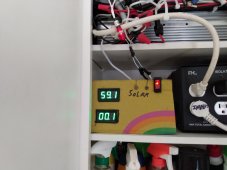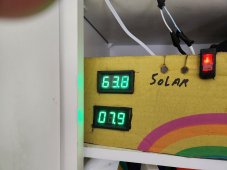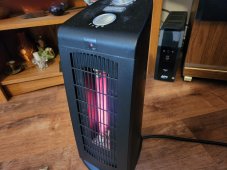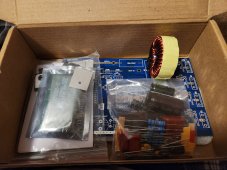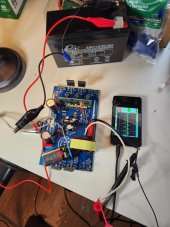GridWorks Green Solar
Solar Innovator
10 AM below freezing outside, running a quartz tube heater at each end of the house ?
Say what you want, I am loving it.?
Here is real world what happens when a dark cloud pass in front of the solar PV array (event ended moments ago with return to full sun) running overhead lights and two heaters, everything smoothly shifts down a notch in intensity, most notable was the fan speed of the quartz tube heater, 3.1 amps shifted to the 120 VAC secondary power from the 5.4 amps solar input, remaining that way till the cloud passed and the full load returned to solar bringing everything back up a notch.
Got 4.5 hours of dual solar heaters on a cold partly cloudy day.?
With voltage controlled relay, sun sensor or timer you can control the loads on the system automatically, I have placed two electric heaters for the season at each end of the home just in time for negative winter temperatures to assist with comfort.
Say what you want, I am loving it.?
Here is real world what happens when a dark cloud pass in front of the solar PV array (event ended moments ago with return to full sun) running overhead lights and two heaters, everything smoothly shifts down a notch in intensity, most notable was the fan speed of the quartz tube heater, 3.1 amps shifted to the 120 VAC secondary power from the 5.4 amps solar input, remaining that way till the cloud passed and the full load returned to solar bringing everything back up a notch.
Got 4.5 hours of dual solar heaters on a cold partly cloudy day.?
With voltage controlled relay, sun sensor or timer you can control the loads on the system automatically, I have placed two electric heaters for the season at each end of the home just in time for negative winter temperatures to assist with comfort.
Attachments
Last edited:




